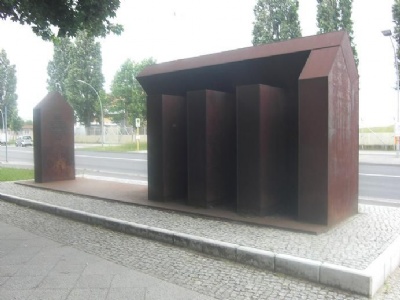Columbiahaus
Following the Reichstag fire of 27 February 1933, political opponents of the Nazis were arrested. Several of them were imprisoned in the basement of the Gestapo headquarters on Prinz Albrecht Strasse, waiting to be questioned. By the end of 1933, Gestapo’s cells were overcrowded, and so the Gestapo requisitioned the existing Columbiahaus prison near Tempelhof airport. From there, the prisoners were taken to the Gestapo headquarters for questioning. When the initial persecution of political opponents ended in the spring of 1934, most ”wild” (unorganized) concentration camps were dissolved. The Columbiahaus, however, remained and ended up under the new authority, Inspectorate for the concentration camps, and was given official concentration camp status. Gestapo was in charge for Columbiahaus and in 1935, Gestapo planned to expand it, but this never happened because the SS was reorganizing the concentration camps and the Columbiahaus was not included in this. The consequence was that Columbiahaus was wound up in November 1936 and subsequently demolished to make way for the expansion of Tempelhof airport.
Current status: Demolished with monument (2009).
Address: Columbiadamm 70, 10965 Berlin.
Get there: Metro to Platz der Luftbrücke Station.
Follow up in books: Kogon, Eugen: The Theory and Practice of Hell: The German Concentration Camps and the System Behind Them (2006).


It was prisons like the Columbiahaus that later became the model for other camps set up by the Nazis in both Germany and occupied Europe. But with the exception of Dachau, few people know about the early Nazi camps. Had the prison continued to exist and not been demolished, the situation would certainly have been different.